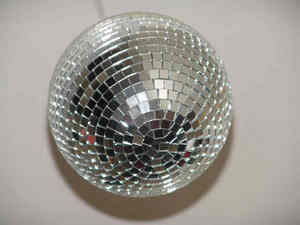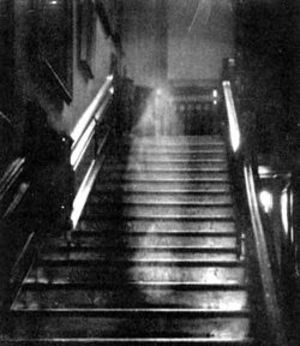If you want to learn to speak Spanish, you will find it much easier to learn if you can learn how to pronounce words correctly. This simple guide will get you started. The Spanish language is actually much more consistent in it’s pronunciations than English is because we borrow words from so many different languages. Spanish is mostly derived from Latin, and if you can master the basics, they can be applied to many different words. Good luck!
The first thing you need to know about speaking Spanish is how to pronounce different letter sounds than what we use in English. If you can master the vowel sounds you are on your way!
A is pronounced ah… as in tall. The word a in Spanish means “to”.
E is pronounced eh… as in egg. The word en in Spanish means “in” or “on”.
I is pronounced ee… as in Tina. The word mi in Spanish means “my”.
O is pronounced oh… as in bone. The word o in Spanish means “or”.
U is pronounced oo… as in dude. The word tú in Spanish means “you”.
You won’t learn Spanish if you don’t speak it! Practice this out loud by saying the Spanish vowel sounds ah, eh, ee, oh, oo over and over until it comes naturally.
There are several letters and letter combinations in the Spanish alphabet that are pronounced differently than in English. If you can spot them and train yourself to pronounce them correctly, you will sound like a much more experienced speaker.
If you see the letters ei together in a word, it will make the “ay” sound, like “Bay”, as in veinte, which means 20. (Bayn-tay)
The letter Y, sounds normal at the beginning of a word, as in yo, which means “I”.
However, when it is used in the middle of a word, is pronounced “ee”, (not yee), as in the Spanish word “y” which means “and.
R’s sound like a mixture between R, D, and L. It is much softer than the way we pronounce it. If you can already roll your R’s, try rolling just once to get the correct R sound as it sounds in Spanish. The word carne (Car-nay) which means “meat”, has a soft R sound. Try it by saying this made up word: Cahdunay. Say this 10 times fast, and you will be close to the light Spanish “R” sound!
When you see two R’s together in a Spanish word, that means you are supposed to “roll” them, like in the word burrito. If you cannot roll your R’s, don’t worry. The skill can be learned by practice. I could not do it when I first learned Spanish either.
To practice, say “Biddledee” many times fast, and your tongue will be moving the same way that it moves in a rolled R. Try combining that sounds with the word burrito, so you are saying, “Buddledeeto.” It may sound silly at first, but the more you practice, the more natural it will sound.
V’s in Spanish sound more like a light “B”, as in “veinte” (Bayn-tay)
Qui sounds like “key” as in the Spanish word aquí, which means “here”. (ah-key)
Que sounds like “kay” as in the Spanish word ¿Qué?, which means “What?”
The Spanish “L” is pronounced like our “L”, but when you see two L’s together, they always change to a “Y” sound, as in ardilla, which means “squirrel”. (Ar-dee-yah)
The H is Spanish is always silent, as in hora, which means “hour”. (Or-ah)
However, when you see an H in front of the letters ua, it can add a W sound, as in Chihuahua. (Chee-wah-wah)
The J in Spanish always has an H sound, as in jamón, which means “ham”
(Ha-mone).
The G in Spanish can be pronounced as a H or a hard G as in the word geografía which means “geography” (Hay-oh-grah-fee-ah).
In Spanish, the tilde, or ~ is used above the n to make the letter ñ.
The Spanish C often sounds like an S, as in cero, which means zero. (Say-rho)
Depending on where you go, some letters will have different pronunciations. For example, in some parts of Spain, the S is pronounced like “th”, as in the girl’s name, Alicia. (Ah-lee-thee-ah). In some places the Y sound like in yo, is given more of a j sound.
The second thing besides letter sounds that you need to pay attention to is emphasis. This is which syllable, or beat, of the word has the strongest sound.
For example, in the English word, “magazine”, (Mag-uh-zeen), the first syllable has the emphasis.
In Spanish, a two syllable word is usually going to have the emphasis on the FIRST syllable. Ex: hora, veinte, hola, which mean”hour”, “twenty”, and “hello.”
A three syllable word is usually going to have the emphasis on the SECOND syllable.
Ex: burrito, dinero, pequeño, which mean burrito, money, and little. (dee-nay-roh) (pay-kay-nyo).
When you see an accent mark ′ which always points left side down in Spanish, this means that the emphasis is on whatever vowel it is over. You will not see accent marks over consonants. Example: aquí (ah-key)
Here is a list of Spanish words for you to practice! Try saying them out loud.
Good luck, and happy practicing!
Perro dog (Peh-rro)
Gato cat (Gah-tow)
Chico guy (Chic-oh)
Niño young boy (Nee-nyo)
Quince fifteen (Keen-say)
Grande big (Gran-day)
Marrón brown (Mah-rrone)
Veranosummer (Ver-ah-no)
Otoño fall (Oh-oh-nyo)
Pájaro bird (Pa-ha-row)
Camisa shirt (Cah-mee-sah)





